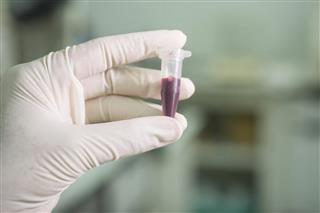
MCV stands for mean corpuscular volume. It is an estimate of the average size of a red blood cell. Given below is some information on MCV normal range along with the interpretation of MCV blood test results.
Complete Blood Count (CBC) is the most common laboratory test that is used to examine the components of blood. It is one of the most basic diagnostic procedures that provides hematologic values such as the white blood cell count, red blood cell count, platelet count, hemoglobin, red cell distribution width (RDW), mean corpuscular volume (MCV), mean corpuscular hemoglobin (MCH) and mean corpuscular hemoglobin concentration (MCHC). While most of us have a basic idea on what white blood cells (WBCs), red blood cells (RBCs) and platelets are, terms such as MCV, MCH and MCHC are lesser known. Let’s find out what is meant by MCV and what MCV blood test results mean.
RBC Indices
MCV, MCH and MCHC are medically referred to as RBC indices. You will come across these terms whenever you go through a CBC test report. If you are keen to find out what MCV means, how is MCV measured, scroll down to find all you need to know on RBC indices.
- MCV is basically a measure of the average volume or size of the individual red blood cells in femtoliters.
- MCV is calculated by dividing hematocrit by the RBC count.
- Hematocrit, which is also referred to as packed cell volume, refers to the percentage of blood volume that is made up of the RBCs.
- Under normal circumstances, MCV must lie within the range of 80 to 100 femtoliters.
- MCH measures the amount of hemoglobin in an average red blood cell.
- In order to calculate MCH, hemoglobin value needs to be divided by the red blood cell count.
- The normal range of MCH is 27 to 31 picogram/cell.
- MCHC refers to the average concentration of hemoglobin in an average red blood cell.
- In order to calculate MCHC, hemoglobin needs to be divided by hematocrit.
- In case of a healthy individual, MCHC must lie anywhere within the range of 31-36 grams/deciliter.
- Red cell distribution width (RDW) is a measure of the changes or variations in the size of red blood cells.
- RDW is calculated by dividing the standard variation by the mean corpuscular volume, and multiplying the result by 100.
- The RDW reference range is 11 to 15%.
Significance of MCV Test
Well, the red blood cells are a very important component of blood. Hemoglobin, which is a protein in the red blood cells, carries oxygen from the lungs to the cells of the body. So, an abnormal RBC count or abnormal hematological readings may be indicative of health problems. When the MCV is higher or lower than the normal range, the red blood cells are larger or smaller than the normal size. The larger and smaller red blood cells are referred to as macrocytic and microcytic red blood cells respectively. The presence of such macrocytic or microcytic red blood cells indicates that the patient might be suffering from a medical condition.
An elevated MCV is usually seen in people suffering from hemolytic anemia or pernicious anemia. Nutritional deficiencies and alcohol abuse are some of the common causes of an elevated MCV. A vitamin B12 deficiency or a folic acid deficiency could also manifest in the form of a higher MCV. On the other hand, low MCV may be observed in people suffering from iron deficiency anemia, thalassemia or gastrointestinal blood loss.
More often than not, abnormal MCV readings point towards anemia. So, the next time your doctor orders a CBC, do check out the MCV readings and see if it is within the normal range. Clarify all your doubts and get the test results explained by your doctor. While drug therapy coupled with lifestyle-related modifications may help in restoring the hematological values to normal, do get the CBC test done at regular intervals to monitor the RBC indices.
Disclaimer: This article is for informative purposes only and does not in any way attempt to replace the advice offered by an expert on the subject.




